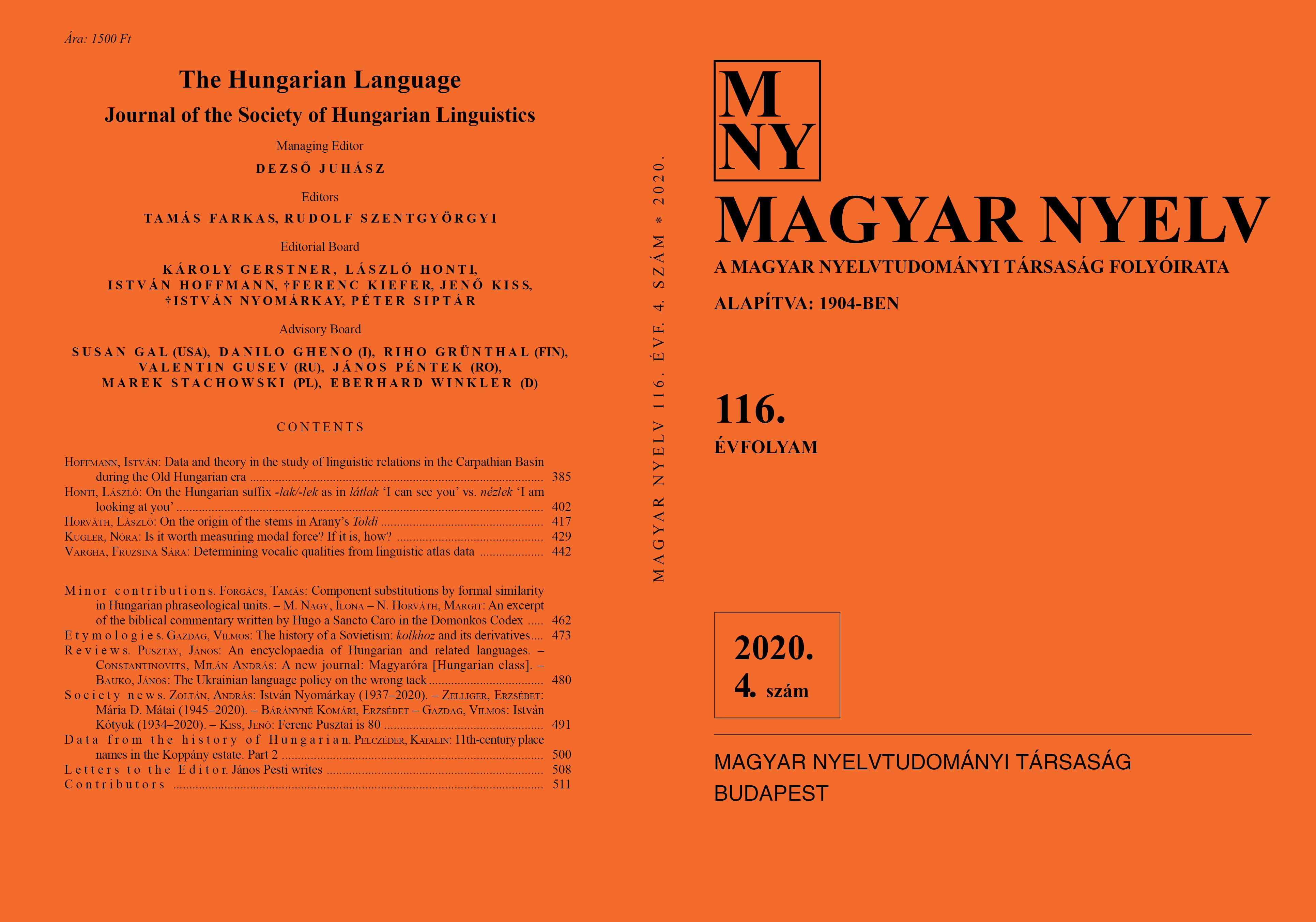Hugo a Sancto Caro bibliakommentárjának részlete a Domonkos kódexben
DOI:
https://doi.org/10.18349/MagyarNyelv.2020.4.466Kulcsszavak:
középkori anyanyelvű szövegek, anyanyelvű szövegek latin forrásai, latinból való fordítás, a kompiláció módjai, Hugo a Sancto Caro, Szent DomonkosAbsztrakt
Jelen írás azt kívánja bemutatni, hogy a Domonkos-kódex – Szent Domonkos élete, több latin forrásból összeállított és magyarra fordított, egyetlen, 1517-ből származó kéziratával – az eddig ismertektől eltérő latin forrás fedezhető fel és azonosítható. 23 sornyi terjedelemben – hozzákapcsolja annak versenkénti magyarázatát Hugo de Sancto Caro (Hugues de Saint-Cher, 1190 k.–1263), neves 13. századi párizsi domonkos teológus, az első domonkos bíboros monumentális Vulgata-kommentárjának idevágó Postilla super librum Sapientie részéből egy kisebb szerkezeti változtatással, egyébként pontos fordításban. A szerzők bemutatják, hogy ez a részlet – beleértve a Vulgata értelmezett verseit is (Bölcs 10,13–14) – hogyan került be a kódex magyar szövegébe. Egy rövid összehasonlítás egy másik népnyelvi kódexben található párhuzamos bibliai idézettel, valamint néhány további megjegyzés az ismeretlen fordítóról.
##submission.downloads##
Megjelent
Folyóiratszám
Rovat
License
Copyright (c) 2024 Ilona M. Nagy , Margit N. Horváth

This work is licensed under a Creative Commons Attribution-NonCommercial-NoDerivatives 4.0 International License.
A periodika Open Access hozzáférésű (Gyémánt). A dokumentumok elektronikus formában szabadon elmenthetők, másolhatók; változtatások nélkül, a forrásra való hivatkozással használhatók. Az alkalmazás kereskedelmi célokat nem szolgálhat. Bármilyen terjesztési és felhasználási forma esetében az 1999. évi LXXVI. szerzői jogról szóló törvény és az ahhoz kapcsolódó jogszabályok az irányadók. Elektronikus változatára a CC BY-NC-ND (Creative Commons – Attribution-NonCommercial-NoDerivatives) licenc feltételei érvényesek.
A folyóirat a szerzők számára időbeli korlátozás nélkül és díjmentesen engedélyezi, hogy kézirataiknak a szerkesztőség által elfogadott, akár a lektori javításokat is tartalmazó, de nem végleges (ún. pre-print) változatait közzétegyék: e-mailen, a szerző vagy intézménye honlapján, illetve a szerző intézményének, egyetemének zárt vagy korlátozás nélkül elérhető repozitóriumában, illetőleg egyéb non-profit szervereken. Amikor a szerző ily módon terjeszti művét, figyelmeztetnie kell olvasóit, hogy a szóban forgó kézirat nem a mű végső, kiadott változata. Ha a cikk végső változata már megjelent nyomtatott, illetve online formában, mindenképpen javasolt és engedélyezett a szerzőnek ezen (post-print) változatot használnia. Ebben az esetben meg kell adnia a folyóiratbeli megjelenés pontos helyét, adatait is. A szerző a közlemény szerzői jogait megtartja, esetleges másodközlés esetén azonban a cikk első megjelenésének bibliográfiai adatait is közölnie kell.




